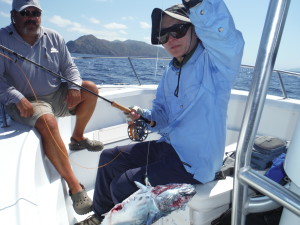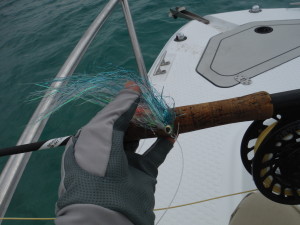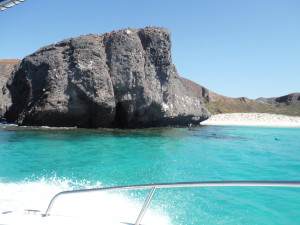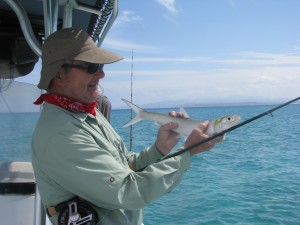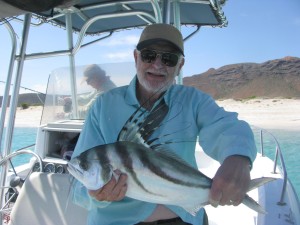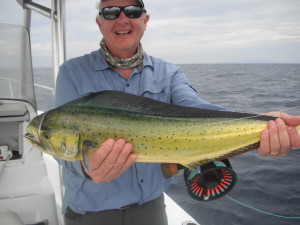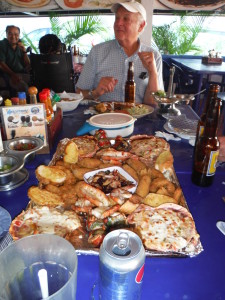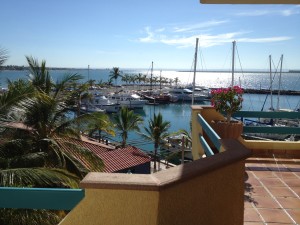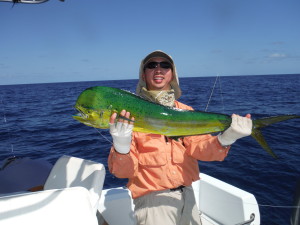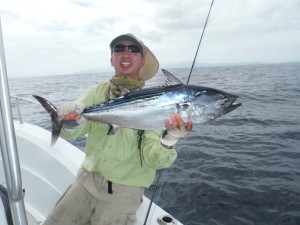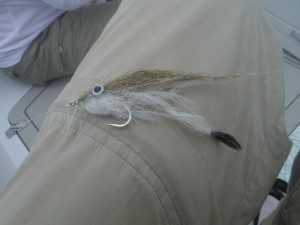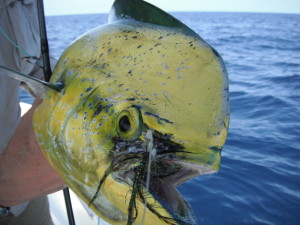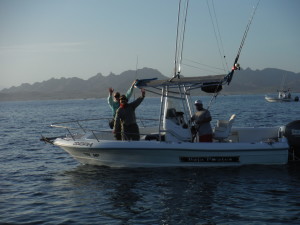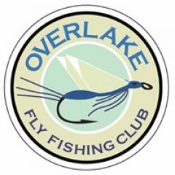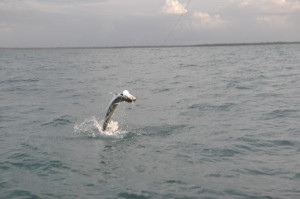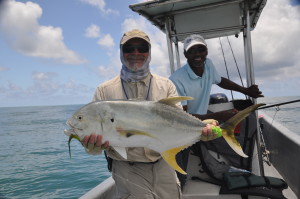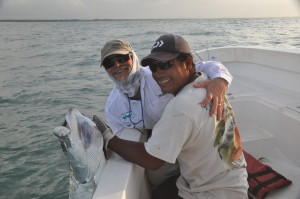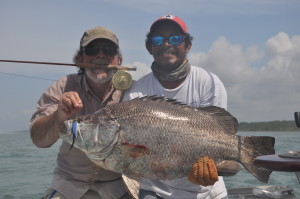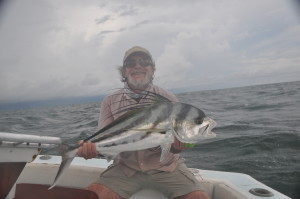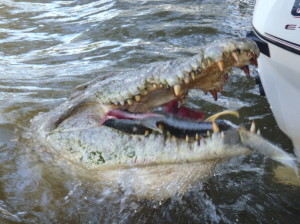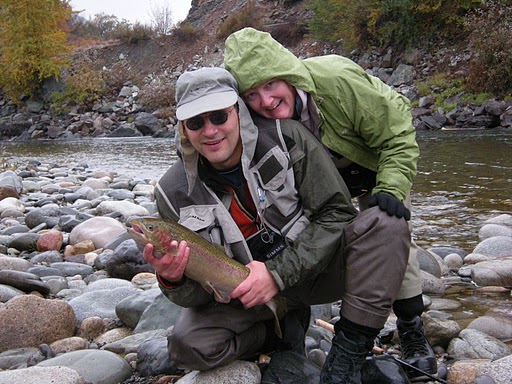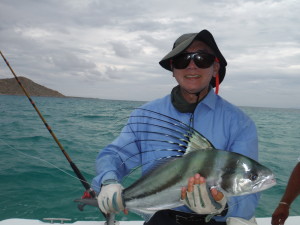
Why visit La Paz for fly fishing? The one word answer is: variety. Collectively, our group landed 8 species – dorado (mahi mahi), bonito (skipjack tuna), black skipjack, rooster fish, needle fish, trumpet fish, lady fish/bonefish, parrago, and even accidentally fooled a frigate bird and pelican. We also spotted snook, sailfish, marlin, wahoo, turtles, manta ray and porpoise.
Larry Elhart, George Hu, Howard Levens, Ray Kanemori, and Richard Pierson (guest) took a trip Oct 10-15th to La Paz, Mexico. Ray Kanemori discovered “Pirates of La Paz” at the fly fishing show last year and signed up for an incredible deal of 5 days, 4 nights, 3 days fishing for $900/ppdo including boats, rods, and 2 meals per day. Airfare can be as little as $550. Richard is the head Fly fishing guide who helped tremendously in this unfamiliar water, is $200/day.
We were targeting dorado (mahi mahi) and roosterfish, and we found plenty of both. We had 2 fishermen to a 21’ boat with a captain. They first look for sea birds, then troll bait & flies, and look for Dorado leaping out of the water. The usual scenario was to hook a dorado on the baitfish or trolled flies, then bring that fish close to the boat and other dorado follow and soon there’s a few circling around the boat. You have to cast flies to them which is challenging because these dorado are extremely quick, always turning, you’re casting in all directions, and they don’t stay around long. We successfully hooked up with the dorado casting in this frenzy, but it wasn’t easy, and was exhausting with a 12 weight. More dorado were caught by trolling, and catching and keeping the limit of 2 per person wasn’t hard. We probably caught and released dozens as a group. The largest one of our group was probably 15 pounds, but we saw a monster 30 pounder landed by another group. Pirates of La Paz will vacuum pack and freeze your fish for you for free.
While trolling flies, we frequently hooked up with Bonito, which is very similar to Skipjack Tuna. These fish are generally football-sized, but they are solid muscle and were some of the best fighters even compared to much bigger dorado. Hooking two at once was common. George landed one monster that was probably 10 pounds. Our most interesting stories involved what happened while trying to land bonito. Ray brought one up that was foul hooked and shredded – most likely by a wahoo, and Howard witnessed one of these toothed torpedos chasing his. George brought one to the surface and saw the huge thin dorsal of a sailfish trying to make a meal of it, while Howard saw his captain bring one up followed by a billfish that presented itself like a periscope rising up out of the waters.
One of the most unusual fish was the Roosterfish, with a rooster-like dorsal fin. They inhabit waters close to shore and we fished for them by boat. Catching Roosterfish was a similar process to the dorado with baitfish attracting them to the boat and then casting to them. They are very fast and put up a good fight. We also caught numerous shore-dwelling species during this process including a lot of needlefish, trumpetfish, and what the local captain called a “bonefish”. It’s similar to the bonefish in color and ability to run, but unfortunately after comparing photos we realized this was actually a “ladyfish” but known by both names. Some in the group also got to go ashore among mangroves and cast for fish. They spotted snook among the mangroves but they were too elusive to hook.
The area is also popular with Marlin fishermen trolling big feathered flies on big gear. A 360 pound Marlin was caught by one of the Pirates captains while we were there. Our fly fishing guide, Richard, has also caught them on a fly after attracting them close to the boat with hookless attractors.
To get to La Paz you fly into the Cabo San Lucas at the tip of the Baja peninsula. La Paz is a 2 hr van ride but a world away because there are no resorts there, just locals. The fanciest seafood meal with drinks and tips was less than $25 per person. We felt very safe walking the streets at night and it has less crime than US cities of comparable size. It’s long been popular with gear fishermen seeking a cheaper and better fishing alternative to Cabo. It’s not yet a major fly-fishing destination, but if you want to try warm water big game fishing on a budget, La Paz is something to consider.
